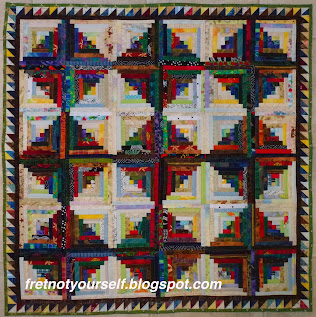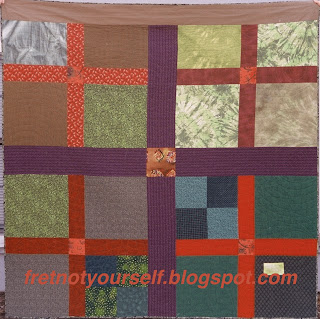Here's an another example of how misguided I can be. Years ago someone wanted to trade these blocks in a fabric combination I knew would look terrible. But she was a good friend so I made a few, planning to piece the top and quietly give it to charity. Well, it looked much better than I thought. Changing my mind, I kept the top and donated something else. Oh, darn; there were only enough blocks for the center... because I knew so much.
When I can't figure a quilt out, I get all my fabric and successively pin it near the problem. I knew commercial solids and hand dyes didn't work well together. Good thing I followed my habit because the dishrags looked great. But none had sufficient yardage to make a border. So I pieced them. Where one fabric got mushy and dirty-colored I picked another hand dye and made little four patches to transition them better.
 |
| Dishrag lavender to dishrag peach |
Adding the inner border meant the outer border needed to be a bit larger. Squares of the black florals in the corner solved that issue. Serendipitously the corner of each square blends with the other points! Lucky me; the top was finally completed.
The blocks are from Princess Feather and Mountain Reel Quilts by Nancy Daniel. It was one of the first designs for rotary cutters and it's an easy pattern. (This is not the quick cut Delectable Mountain. The light side is larger than the print side of this block.)
Fret not; enjoy the day.
Ann
Fret not; enjoy the day.
Ann




















